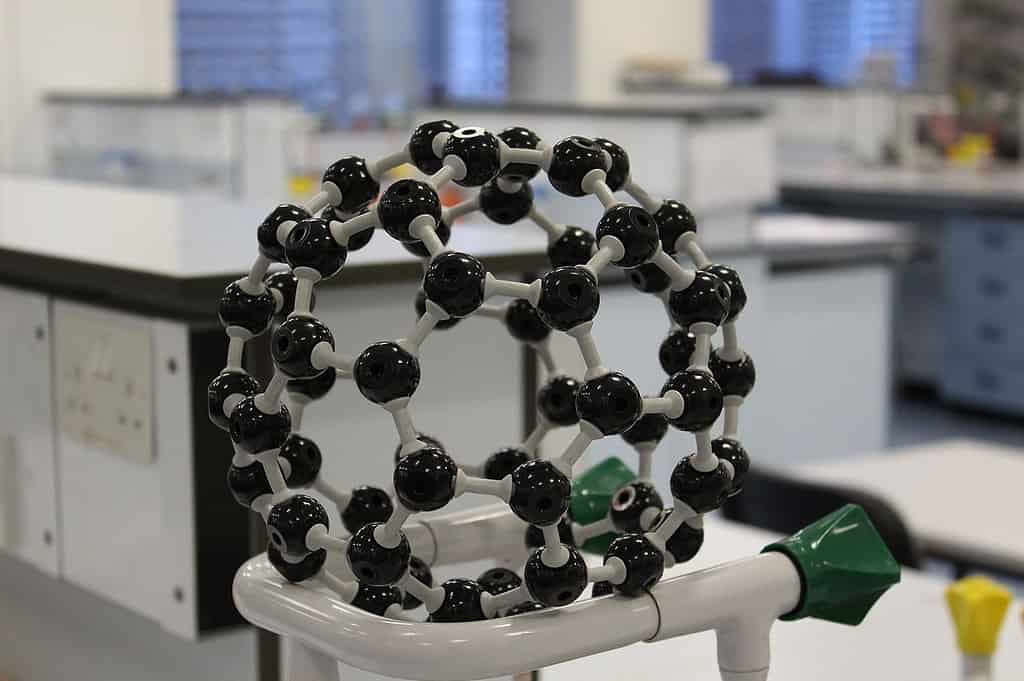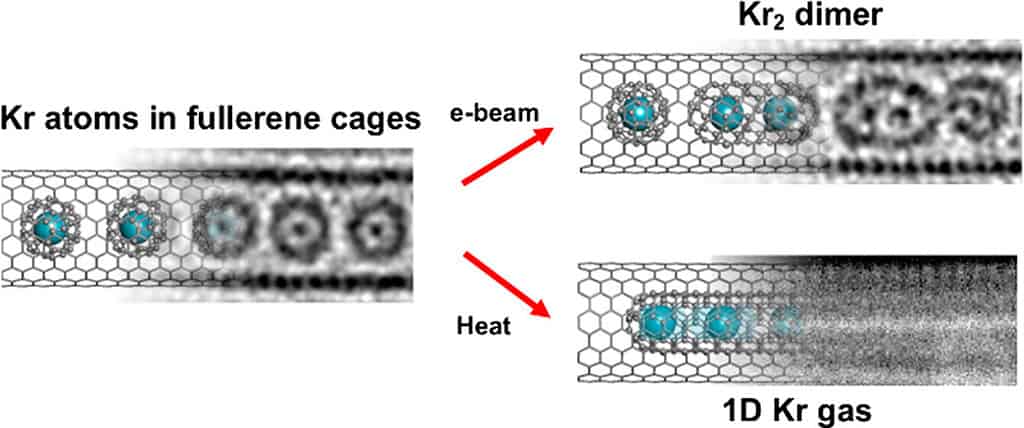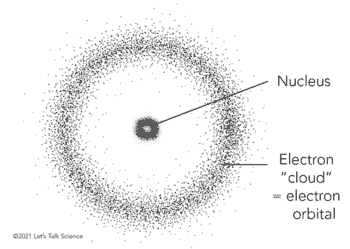
In one of the most amazing feats of microscopic engineering, chemists at the University of Nottingham have trapped atoms of krypton inside a carbon nanotube barely 1/500,000th the diameter of a human hair. In the process, the krypton atoms were lined up in such a tight space that they effectively formed a one-dimensional gas. Confused about what all this means? Let’s clear things up a bit.
A one-dimensional atomic traffic jam
This remarkable state was achieved through the ingenious use of buckyballs, or buckminsterfullerene, to trap and position each atom. Buckyballs, named after the visionary architect Buckminster Fuller, are molecules composed of 60 carbon atoms shaped like a soccer ball.
In this experiment, the buckyballs served as tiny cages for the krypton atoms. The buckyballs were then fused inside the nanotube, either by heating to a searing 1,200 degrees Celsius (2,192 degrees Fahrenheit) or by bombarding them with an electron beam. This fusion released the krypton atoms in a perfect line, like pearls on a string, creating what is effectively a one-dimensional gas.
“As far as we know, this is the first time that chains of noble gas atoms have been imaged directly, leading to the creation of a one-dimensional gas in a solid material,” said Professor Paul Brown, director of the Nanoscale and Microscale Research Centre (nmRC) at the University of Nottingham.

In these nano confines, the krypton atoms displayed unique behavior. They couldn’t bypass each other, akin to cars in a traffic jam. Using scanning transmission electron microscope imaging and electron energy loss spectroscopy, the scientists were able to scan across the nano test tube and record spectra of individual atoms confined within.
Why go through all this trouble you might ask? By using krypton, which has a high atomic number, the researchers could track the atoms as moving dots under their transmission electron microscope. This allows for unprecedented real-time observation and study of individual atoms at a scale that was hard to imagine previously. Previously, scientists could only use spectroscopy to track the movements of groups of atoms.
These pairs are held together by van der Waals interaction, which is a mysterious force governing the world of molecules and atoms. This is an exciting innovation, as it allows us to see the van der Waals distance between two atoms in real space. It’s a significant development in the field of chemistry and physics that can help us better understand the workings of atoms and molecules,” said Professor Ute Kaiser.
Yes, technically the krypton atoms are still three-dimensional. Each krypton atom is made of a lot of electrons and a nucleus containing 36 protons and just as many neutrons, depending on the isotope. Protons are made up of even smaller particles known as quarks. But don’t get too caught up in these nano-technicalities. For all practical purposes, the carbon nanotube-trapped atoms represent a one-dimensional state.
“Such strongly correlated atomic systems may exhibit highly unusual heat conductance and diffusion properties. Transmission electron microscopy has played a crucial role in understanding the dynamics of atoms in real-time and direct space,” said Professor Brown.
The findings were reported in the journal ACS Nano.






